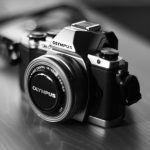SLR (single-lens reflex) digital cameras offer superior image quality, versatility, and creative control compared to point-and-shoot models. However, choosing the right SLR camera can be daunting given the vast range of options available. Here's a comprehensive guide to help you navigate the process and select the ideal camera for your needs.
**Consider Your Skill Level and Purpose**
If you're new to photography, consider a beginner-friendly camera with automated features and intuitive controls. Advanced photographers may prefer cameras with more manual controls for greater creative freedom. Determine your primary purpose for using the camera, whether it's photography, videography, or a combination.
**Sensor Size and Resolution**
The sensor is the camera's light-sensitive component. Larger sensors generally yield better image quality, especially in low light. Resolution is measured in megapixels (MP), with higher numbers indicating more pixels and potentially sharper images. However, it's important to consider the balance between resolution and image size, as larger files can be more difficult to manage and store.
**Lens Compatibility**
SLR cameras offer interchangeable lenses, allowing you to adapt to different shooting scenarios. Consider the lenses you may need for your intended use, and ensure the camera you choose is compatible with them. Some cameras have a wider lens selection than others, so research the available options before making a decision.
**Viewfinder**
The viewfinder enables you to compose and preview your shots. Optical viewfinders provide a real-time view of the scene, while electronic viewfinders (EVFs) offer a more customizable and information-rich experience. EVFs can also be helpful for video recording and low-light shooting.
**Autofocus Performance**
Autofocus speed and accuracy are crucial, especially for fast-moving subjects. Look for cameras with advanced autofocus systems, such as phase detection or hybrid autofocus, which can track subjects effectively. Continuous autofocus (AF-C) is essential for capturing action shots.
**Burst Mode and Frame Rate**
Burst mode allows you to capture a rapid sequence of images, which is ideal for capturing fast-moving objects. The camera's frame rate, measured in frames per second (FPS), determines the maximum number of images that can be captured per second. Higher frame rates are beneficial for sports photography and action sequences.
**Video Capabilities**
If video recording is important to you, consider cameras with dedicated video modes and features. Look for cameras that support 4K or higher resolutions, offer slow-motion capabilities, and have external microphone inputs for enhanced audio quality.
**Additional Features to Consider**
* **Weather Sealing:** Protects the camera from dust, moisture, and extreme temperatures.
* **Built-in Flash:** Provides additional illumination when necessary.
* **Wi-Fi and Bluetooth:** Allows for wireless image transfer and remote camera control.
* **Ergonomics:** The camera's grip, button placement, and overall handling should be comfortable for your hands.

